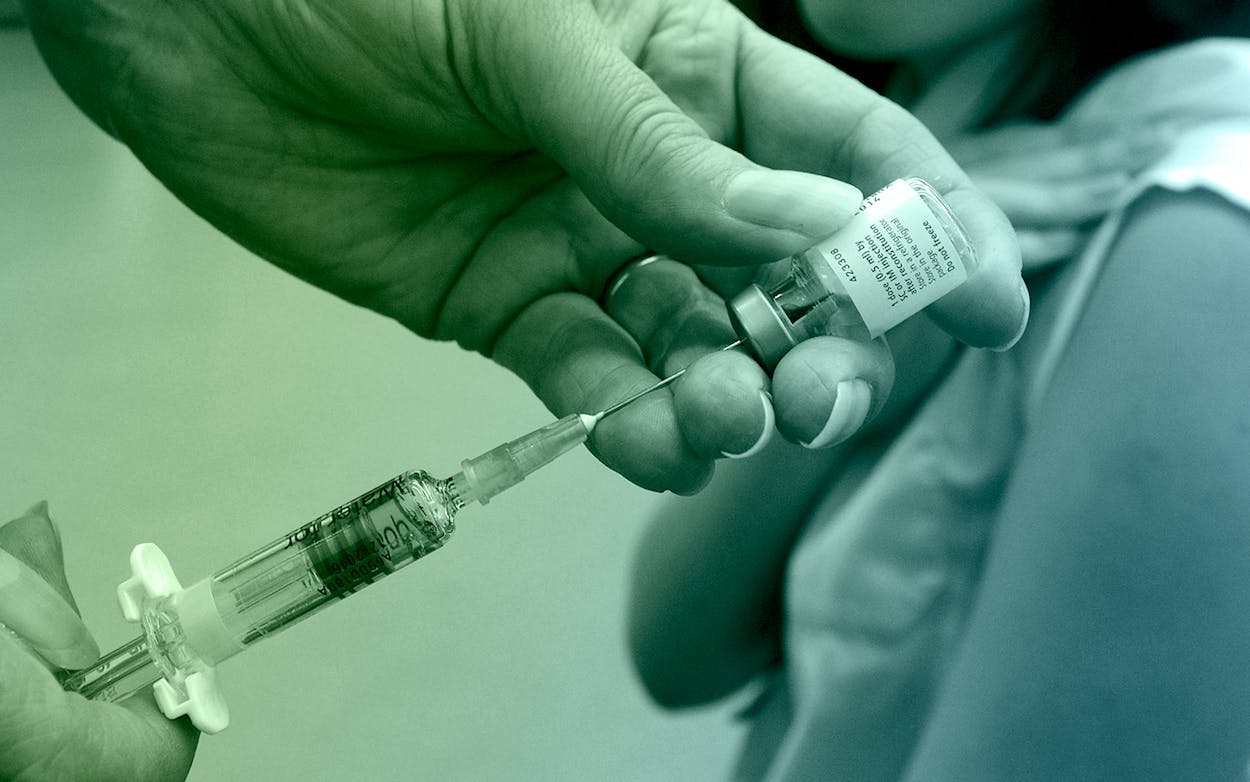On Monday morning, three cases of measles were confirmed in Harris County. By the middle of the day, two additional cases were confirmed, one each in Montgomery and Galveston County. The trend suggests a possible outbreak. The disease, which was considered eradicated in the United States in 2000, has been on something of an upswing in recent years, with 372 cases confirmed in 2018. This year is on pace for an uptick in the once-eliminated disease: Through January 31, the Center for Disease Control has identified 79 cases of measles in the U.S. If the rate remained consistent, that would put us on pace for a whopping 948 throughout the year, more than in any other year since the disease was considered eliminated in cases originating in the U.S.
That’s a small number of cases when compared historically—in the 1960s, there were millions of measles cases in the U.S. each year and millions more died from related complications around the globe. Yet it’s part of a trend of diseases once considered eliminated (or nearly so) returning to cause a public hazard.
There’s seldom a single cause for the spike in outbreaks in measles and other archaic diseases on American soil. Some outbreaks occur because a traveler brought the disease with them after visiting a country where it had not been eliminated, while others happen because they appear in a small community with poor vaccine coverage. In 2014, the year with the largest number of U.S. measles cases in this decade, more than half of the 667 instances occurred within a single unvaccinated Amish community in Ohio. But regardless of the specifics, outbreaks in the U.S. occur more frequently because there are more parents who’ve decided not to vaccinate their children.
Measles vaccines work by creating community, or “herd,” immunity, effectively eliminating the disease by ensuring that there aren’t enough people susceptible to it for it to spread. In order for a disease as infectious as measles to be eliminated, it requires a vaccination rate of 95 percent. A 2016 study published in the Public Library of Science found that that rate was dangerously close to slipping below the necessary figure in many Texas counties.
Last summer, another study published by the Public Library of Science analyzed nationwide trends around vaccinations and identified fifteen “hot spots” among the anti-vaccination movement. Four of them were in Texas. Collin, Harris, Tarrant, and Travis Counties all drew attention for the number of parents requesting non-medical exemptions to vaccination rules or exemptions that weren’t taken for specific medical reasons. Those four counties represent fairly different ideologies—Travis is the deepest shade of blue in Texas (Beto O’Rourke won the capital by fifty points) while suburban North Texas’s Collin County is the largest red enclave in the state—but the belief that vaccines are a threat to the safety of children crosses other political and ideological boundaries. Unlike, say, climate change, where beliefs tend to fall along the political divide, anti-vaxxing tends to attract people with strong feelings on either end of the political spectrum.
According to KHOU, in both Montgomery County and Harris County ISDs, the measles vaccination rate is under that crucial 95 percent figure, which means that the potential for the highly infectious disease to spread ought to be a matter of some concern. Whether or not these cases develop into an outbreak, as long as those numbers continue to drop, communities are likely to remain at risk.








